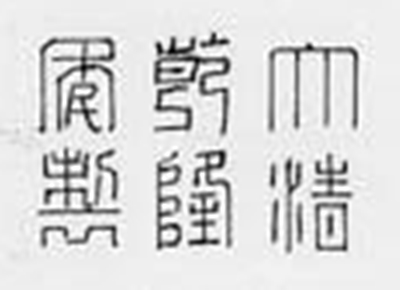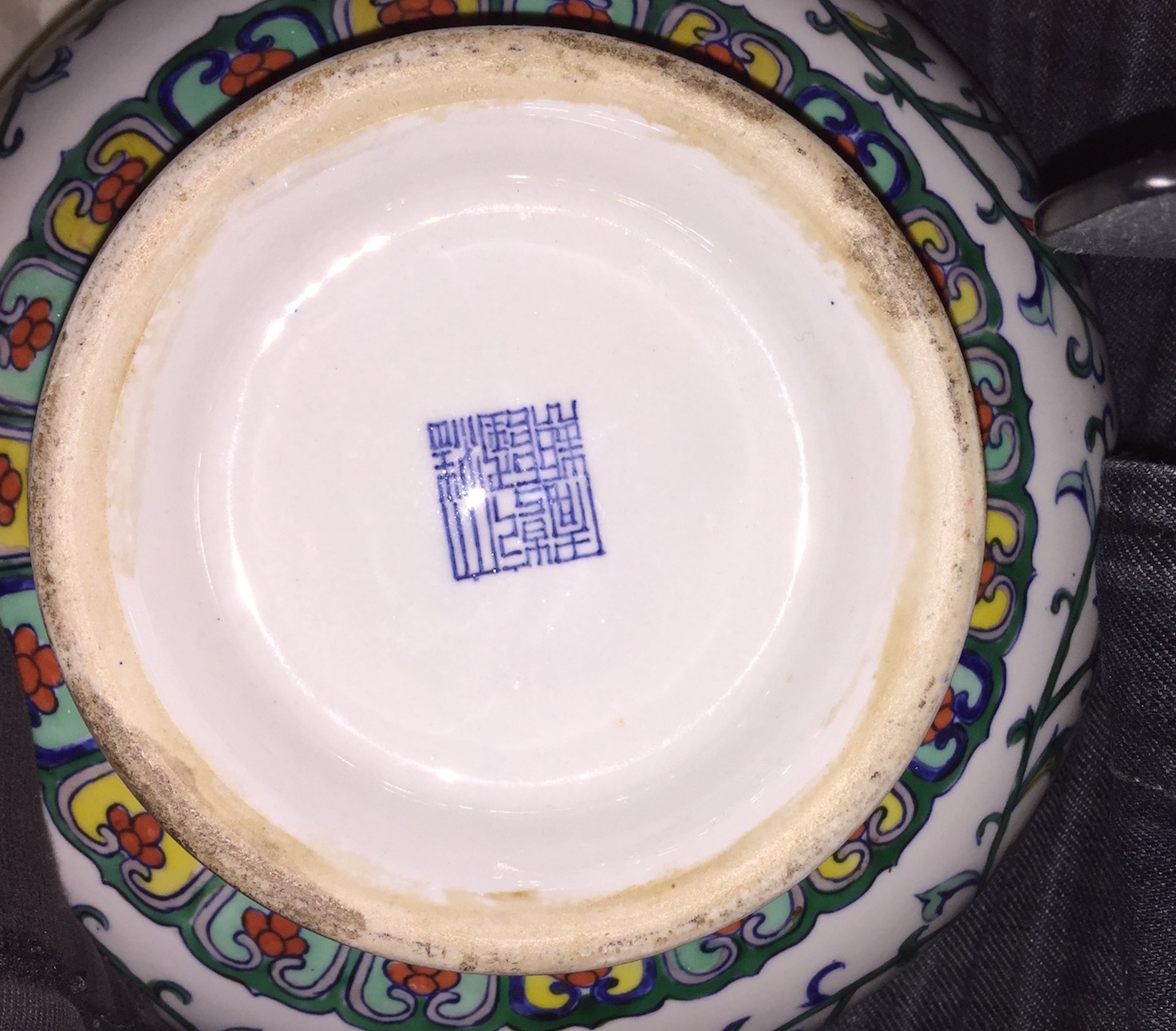
|
Subject:Re: famille rose vase help identify age and maker.
Posted By: snap Fri, Apr 01, 2016
In the future when you have given a little study to Chinese porcelains and their decoration, you will be able to say the following about your vase:
--Its decoration shows no sign of rose-pink enamels created using colloidal gold. Since such rose-pink does not pervade the decorative scheme here, the decoration can not be called "famille rose." That term was invented in the 19th century by French collectors to describe the enamel color scheme first used in the first half of the 18th century. An internet search will give you some historical details.
--The vines have many different shapes attached to them to fill space as "leaves." Some of these shapes are not in the Chinese repertoire of flowering-vine leaves. An internet search for lotus scroll will begin to give you an idea.
--The handles on the neck are decorated by small-dot shading, which is not a traditional method in China. Can you tell what the handles are supposed to represent? I cannot tell from your photographs.
--There should be five bats, a rebus for good fortune, rather than four.
--The blue mark in seal characters on the base does, if rotated 90 degrees clockwise, read from top right and down, "Da Qing Qian Long nian zhi" Great Qing (dynasty) Qianlong reign made. If it was not stamped, it was applied by a painter with a very steady hand. This has been a popular mark to put on porcelains for almost 150 years. The Qianlong reign was 1736-1795. In most cases such reign marks should be considered part of the decoration, although sometimes used to try to deceive buyers into thinking that a piece was actually made during that reign (as in fake or fraud). An experienced collector would not think that your vase was made during that reign.
I will rely on others to say where they think your vase was decorated.
I have attached an image with each seal character in your vase's mark separated so you can see what is what.



|
 famille rose vase help identify age and maker.
famille rose vase help identify age and maker.  ( China & Japan ) - andrew - Mar 31, 2016 (08:39 AM)
( China & Japan ) - andrew - Mar 31, 2016 (08:39 AM)  Re: famille rose vase help identify age and maker.
Re: famille rose vase help identify age and maker.  - snap - Apr 01, 2016 (08:27 AM)
- snap - Apr 01, 2016 (08:27 AM)  Re: famille rose vase help identify age and maker. - TD - Apr 01, 2016 (09:10 AM)
Re: famille rose vase help identify age and maker. - TD - Apr 01, 2016 (09:10 AM)  Re: famille rose vase help identify age and maker.
Re: famille rose vase help identify age and maker.  - andrew - Apr 07, 2016 (12:01 AM)
- andrew - Apr 07, 2016 (12:01 AM)  Re: famille rose vase help identify age and maker. - snap - Apr 15, 2016 (01:34 AM)
Re: famille rose vase help identify age and maker. - snap - Apr 15, 2016 (01:34 AM)  Re: famille rose vase help identify age and maker. - Bill H - Apr 16, 2016 (01:05 AM)
Re: famille rose vase help identify age and maker. - Bill H - Apr 16, 2016 (01:05 AM) 
